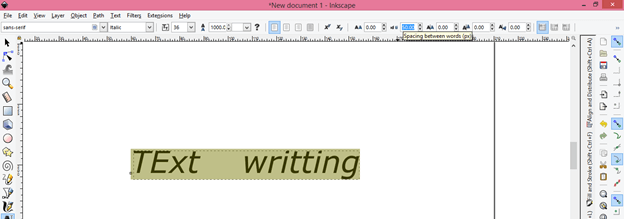

Plus the text remains editable, as does the amount of dilation, should you need to change things in future. Of course, it's still no substitute for a proper bold font, but might be useful to someone.

If you click the "Link" button to de-select it, you can adjust the horizontal/vertical sliders independently

(The former will be good, the latter will be ugly). Obviously, there will be a difference between hand-made slanted style and software-generated slanted style. Both were created manually by font designer. Just click on the Create and edit text objects tool in the Toolbox, click on the canvas where you want the text to appear, and in the text Tool Controls Bar select the font, font size, and font style (Normal, Italic, Bold) that you want. Note, there is italic style and also slanted style. Putting text into an Inkscape drawing is as easy as it is in any word processing application. To get into this mode, double click the text. You will only see these options when you are in text edit mode. This is where you can adjust the kerning and spacing of your text. For example, as a font designer (actuall I'm not), I could create a font with this set of styles: When using the Text tool you will see a selection of text editing options at the top toolbar. In the example above, to make a screenshot of 3rd line, I just temporary removed Georgia Italic from my PC.įor sans-serif fonts (Arial, Verdana) the difference sometimes isn't very easy to determine.Īnd also, note that there is a difference between "software-generated" slanted styles and "hand-made" ones.

Georgia font in normal, italic and fake italic variants If your font don't have support of Bold or Italic, most " office-like" software (LibreOffice, Microsoft Office and many others) will simulate it.įor serif fonts (Times, Georgia) it's easy to determine the difference, because real italic looks like "written by hand", whereas "fake italic" (so-called "Slanted" or "Oblique") repeats the form of non-italic letters.


 0 kommentar(er)
0 kommentar(er)
